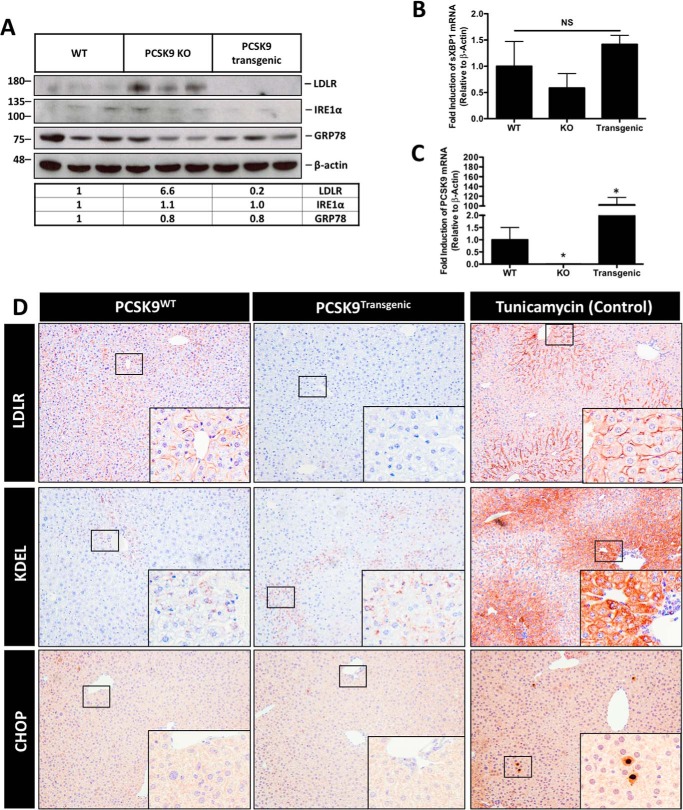Figure 8.
Marked overexpression of mouse PCSK9 does not induce the UPR in murine liver. To examine whether elevated levels of nascent ER-resident PCSK9 promote UPR activation in vivo, we tested the hypothesis in a transgenic murine model known to express ∼40–100-fold greater levels of PCSK9 than WT controls. A and B, immunoblot and real-time PCR analyses were carried out in the livers of these mice, PCSK9 KO mice and WT controls, to characterize ER stress marker expression of IRE1α, GRP78, and sXBP1. C, a control real-time PCR was also done to confirm the overexpression of PCSK9 in our model. D, formalin-fixed paraffin-embedded liver sections from these mice in addition to mice treated with the ER stress–inducing agent tunicamycin (500 μg/kg; single injection for 24 h) were also stained for ER stress markers KDEL and CHOP. LDLR staining served as a control for the status of PCSK9 expression. Differences between treatments were assessed with unpaired Student's t tests. All values are represented as means, and error bars represent S.D. B, nonsignificant (NS). C, *, p < 0.05 versus WT.

